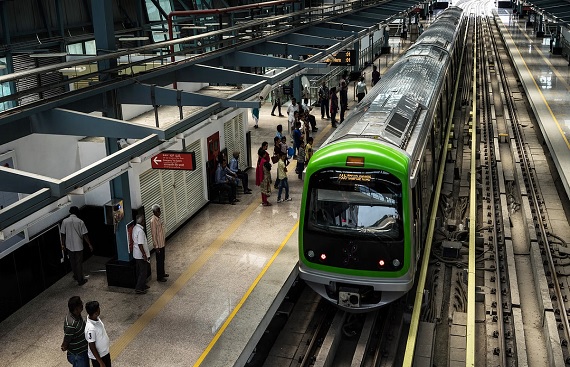India's Metro System to Surpass US, Becoming Second Largest
By
siliconindia | Monday, 08 January 2024, 06:01 Hrs

India's metro network is experiencing rapid expansion and is poised to overtake the United States to become the world's second-largest in the next few years. According to Union Housing & Urban Affairs Minister Hardeep Singh Puri, in 2014, only 248 km of metro rail was operational in India. Within a span of nine years, the operational metro lines have surged to 895 km across 20 different cities, as highlighted during the Urban Mobility India Conference cum Expo 2023.
Construction is currently underway for metro rail projects spanning 986 km in different cities. Among these, two significant metro lines in Mumbai and Delhi are set to be completed this year, offering commuters a new mode of travel. Notably, the Aqua Line 3 in Mumbai's Metro Network, covering 33.5 km, is an impressive engineering feat as it is entirely underground and is being developed with an investment of Rs 33,000 crore.
The line runs along the Colaba-Bandra-SEEPZ corridor connecting the city's financial hubs such as Nariman Point, Bandra-Kurla-Complex, Fort, Worli and goes up to Goregaon. The entire route is expected to be operational in 2024, with Phase 1 likely to be inaugurated by April. The first section of Delhi Metro’s Phase IV is to be opened by July 2024. This comprises the Magenta Line from Janakpuri West-RK Ashram Marg which covers a 28.92 km route with a 21.18 Km elevated structure while the remaining 7.74 Km is underground.
The other two lines of Phase IV on which work is underway are the Majlis Park- Maujpur (12.55 Km) and Aerocity- Tughlaqabad ( 23.62 km) routes. The country’s metro network boasts of a daily ridership of around 1 crore and has brought about a transformational change with greater comfort, stability and security in urban mobility. Currently construction work is being carried out on several metro projects across the country such as Navi Mumbai Metro, Pune Metro, Madhya Pradesh Metro, Kanpur Metro, Agra Metro, Meerut Metro and Surat Metro.
A groundbreaking initiative is underway to alleviate congestion in major cities with the introduction of India's inaugural rail-based Regional Rapid Transit System (RRTS). This system will connect the 82 km stretch between Delhi and Meerut. Prime Minister Narendra Modi recently inaugurated the initial 17-km segment from Sahibabad to Duhai Depot, marking the event by riding the Namo Bharat train along the route. The complete corridor is expected to be operational by 2025.
Namo Bharat, an Electric Multiple Unit (EMU) train designed specifically for RapidX (Regional Rapid Transit services), was crafted by the French rolling stock manufacturer Alstom at its engineering center in Hyderabad and manufactured in Savli, Gujarat. Similar trains are anticipated to be launched in additional cities. As part of the evolving urban mobility scene, the PM-eBus Seva Scheme is also being introduced. Under this initiative, the government aims to deploy 10,000 electric buses on a Public-Private Partnership (PPP) model, spanning 169 cities.

